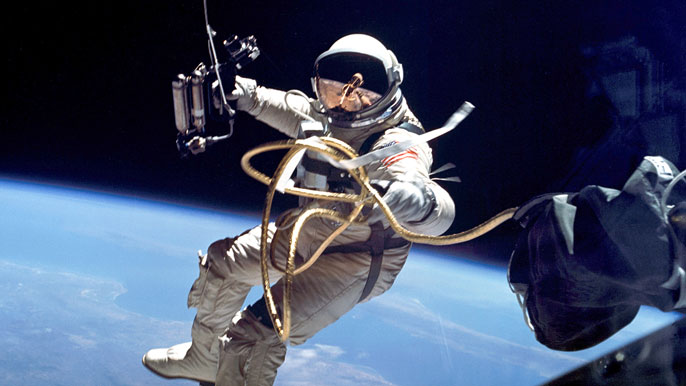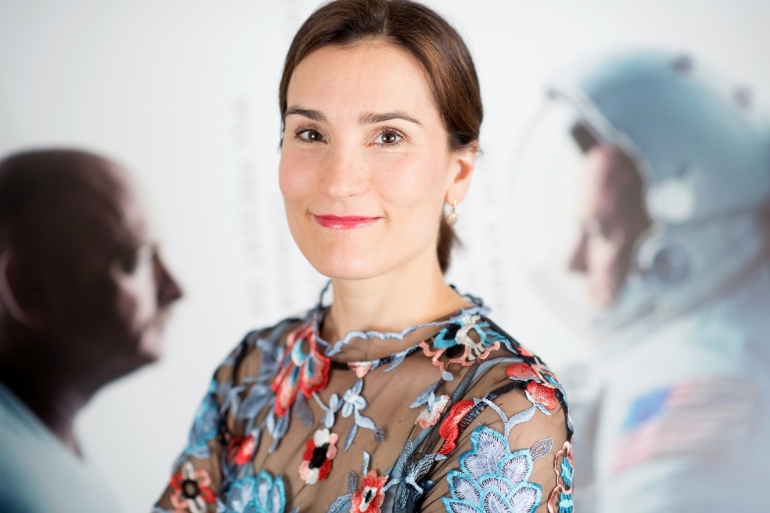Traveling to Mars Will Wreak Havoc on Our Bodies — Can We Prevent It?

UCSF News reports on research into the effects of space travel, known and unknown, to the physiology and bodies of astronauts traveling about the international space station (ISS). The research has profound implications for longer trips to distant planets, notably NASA's goal of flying a manned spacecraft to Mars. Research into the novel and myriad effects of space travel on humans will be critical to the success of this endeavor.
Three faculty in the UCSF Department of Surgery and an esteemed collaborator in the Department of Biochemistry and Biophysics, were among the researchers profiled in this story. Marlene Grenon, M.D., C.M., a vascular surgeon and Director of the Grenon Lab, is conducting pioneering research on how the cardiovascular system fares under the rigors of space travel. Sonja Schrepfer, M.D., Ph.D., Associate Professor and Director of the Transplant and Stem Cell Immunobiology (TSI) Lab and Tobias Deuse, M.D., Associate Professor, Director of Minimally Invasive Cardiac Surgery and a principal investigator in the TSI Lab, are carrying out research, funded by the National Aeronautics and Space Administration (NASA), looking at changes to the function of vascular cells after space flight as well as how the immune system and cell repair are affected.
Millie Hughes-Fulford, Ph.D., a Professor in the Department of Biochemistry and Biophysics and Director of the Laboratory of Cell Growth at the San Francisco VA Medical Center (SFVAMC), herself a former astronaut with a rarefied career in space research, has several ongoing projects related to space travel including T-Cell Activation and Aging on the ISS - SpaceX3 and SpaceX5 and Bones in Space (Osteo Project). Dr. Hughes-Fulford collaborates with both the Grenon Lab and TSI Lab.
As humans prepare to venture deeper into outer space, including potential trips to Mars, researchers are hard at work trying to understand and mitigate the effects of low gravity and radiation on space travelers’ bodies.
Heart of the matter: The cardiovascular system
The radiation and low gravity of space also has an impact on the body’s vascular system, causing circulatory problems for astronauts when they return to Earth and an increased risk of heart attack later in life.
Marlene Grenon, associate professor of vascular surgery, has had a longtime interest in the effects of space flight on the vascular system. “Astronauts are in good shape, and exercise protocols are part of their lives,” said Grenon. “So we want to know what’s going on here. Is it radiation? Gravity? Other physiological factors?”
Grenon, who has a diploma in Space Sciences from the International Space University and has developed UCSF’s first course on the effect of spaceflight on the body, has studied the effects of simulated microgravity on the function of vascular endothelial cells which line the inside of blood vessels.
Grenon cultured these cells and placed them in an environment that simulated very low gravity. She found that the lack of gravity causes a decrease in the expression of certain genes in the cells that affect adhesion of plaque to the vessel wall. While the implications of these changes aren’t yet clear, it’s evident that a lack of gravity affects cell function.
In addition, previous work by Grenon showed that microgravity creates changes in the cells that conduct electricity in the heart, which may put astronauts at risk of cardiac arrhythmias.
Marlene Grenon, associate professor of vascular surgery, has studied the effects of simulated microgravity on the function of vascular endothelial cells which line the inside of blood vessels.
Credit: Noah BergerGrenon’s colleagues Dr. Sonja Schrepfer and Dr. Tobias Deuse, also professors of surgery, are helping put pieces of that puzzle together by determining what changes to the function of vascular cells are evident after space flight.
Schrepfer in 2016 studied the vascular systems of mice that had spent time on the ISS, as well as vascular cells cultured in a microgravity environment on Earth. Her team is still analyzing their data, but so far it appears that the walls of the carotid arteries became thinner in mice in space, possibly because the lower gravity demanded less blood pressure for circulation.
The team also found that the cultured cells showed changes in gene expression and control that resemble changes seen in patients with cardiovascular disease on Earth.
While these changes might not be detrimental in the microgravity of the Space Station, on Earth they result in poor blood circulation.
“When astronauts return to Earth’s gravity, muscle weakness is only part of the reason they can’t stand up,” Schrepfer said. “They also don’t get enough blood to their brain, because their vessel function is impaired.”
There is hope: Schrepfer and her team have identified a small molecule that prevents vascular walls from thinning in mice. She and her team are planning to do safety trials of that molecule on humans in the near future.
Sonja Schrepfer and Tobias Deuse are studying what changes to the function of vascular cells are evident after space flight.
Credit: Noah BergerImmune system and cell repair
Schrepfer has also received an award to study effects of microgravity on the immune system as a model of aging, both in space and after returning to Earth. She has a kindred spirit in Millie Hughes-Fulford, adjunct professor of medicine and the first female scientist to work in space. Hughes-Fulford tended experiments aboard the Columbia space shuttle in 1991, and has been investigating the changes in gene expression in T-cells in space since about 2003.
“Over half of the Apollo astronauts had some sort of immune problem,” she said. “So, we knew back then that the immune system wasn’t working well in space.”
Her current work involves not only looking at gene expression but also at the role of microRNA (miRNA) — tiny molecules that can switch genes on or off. Her research revealed five of these miRNAs, each of which controlled genes that activate T-cells, weren’t working properly.
“Before this, we could say that the genes weren’t being turned on, but we didn’t know why,” said Hughes-Fulford. “Now we know the regulators of the genes.”
These changes are the same ones seen in aging, leaving the elderly with less robust immune systems. In space, though, the changes begin to occur after 30 minutes, while in a human they may take 30 years. The research by Schrepfer and Hughes-Fulford could help people who travel in space, but also is an opportunity to study changes that can be challenging to follow throughout decades on Earth.
Millie Hughes-Fulford has been investigating the changes in gene expression in T-cells in space since about 2003. Her current work involves not only looking at gene expression but also at the role of microRNA (miRNA) — tiny molecules that can switch genes on or off.
Credit: Noah Berger
Read full article in UCSF News
Top photo courtesy of NASA Flickr


